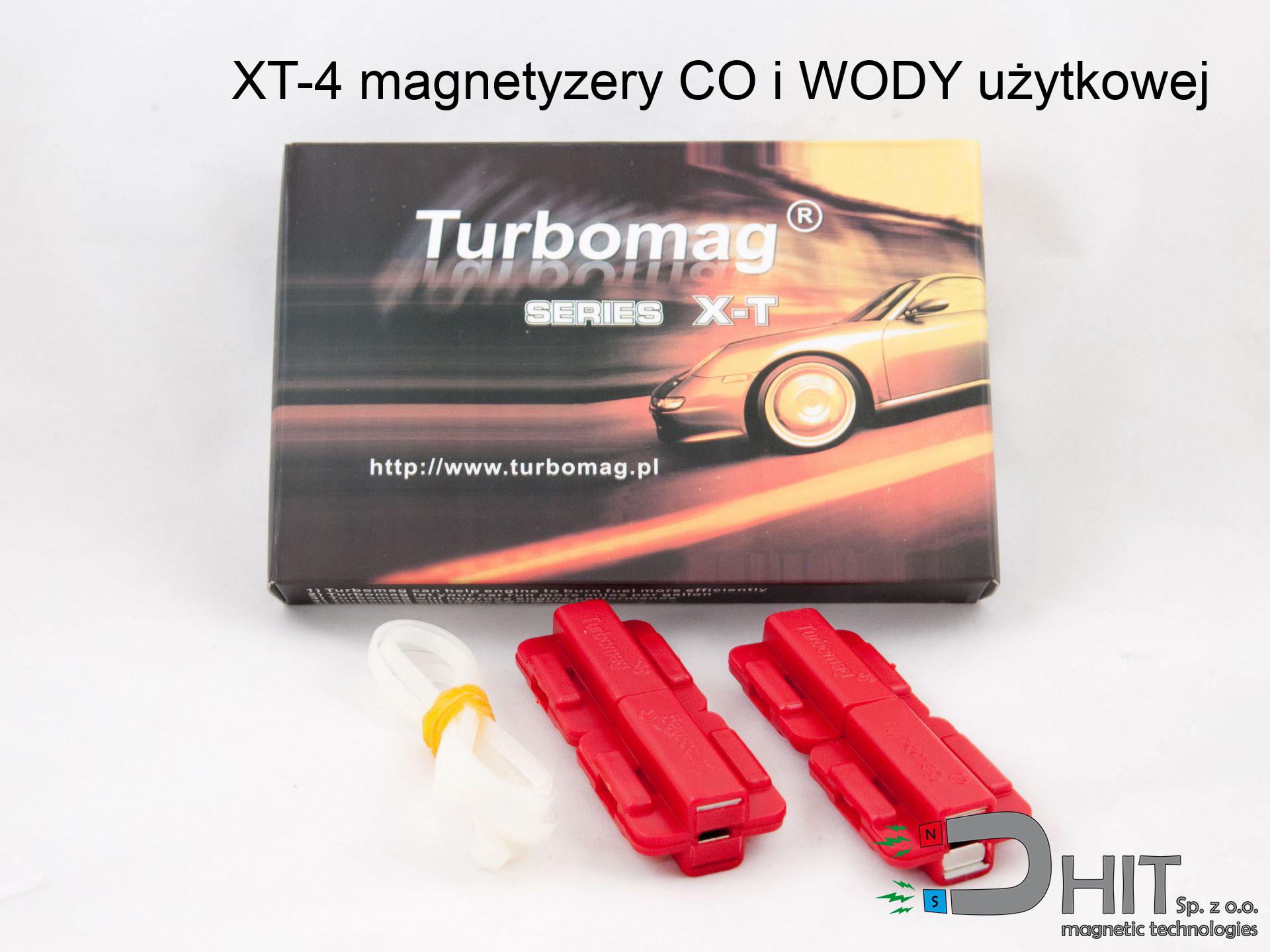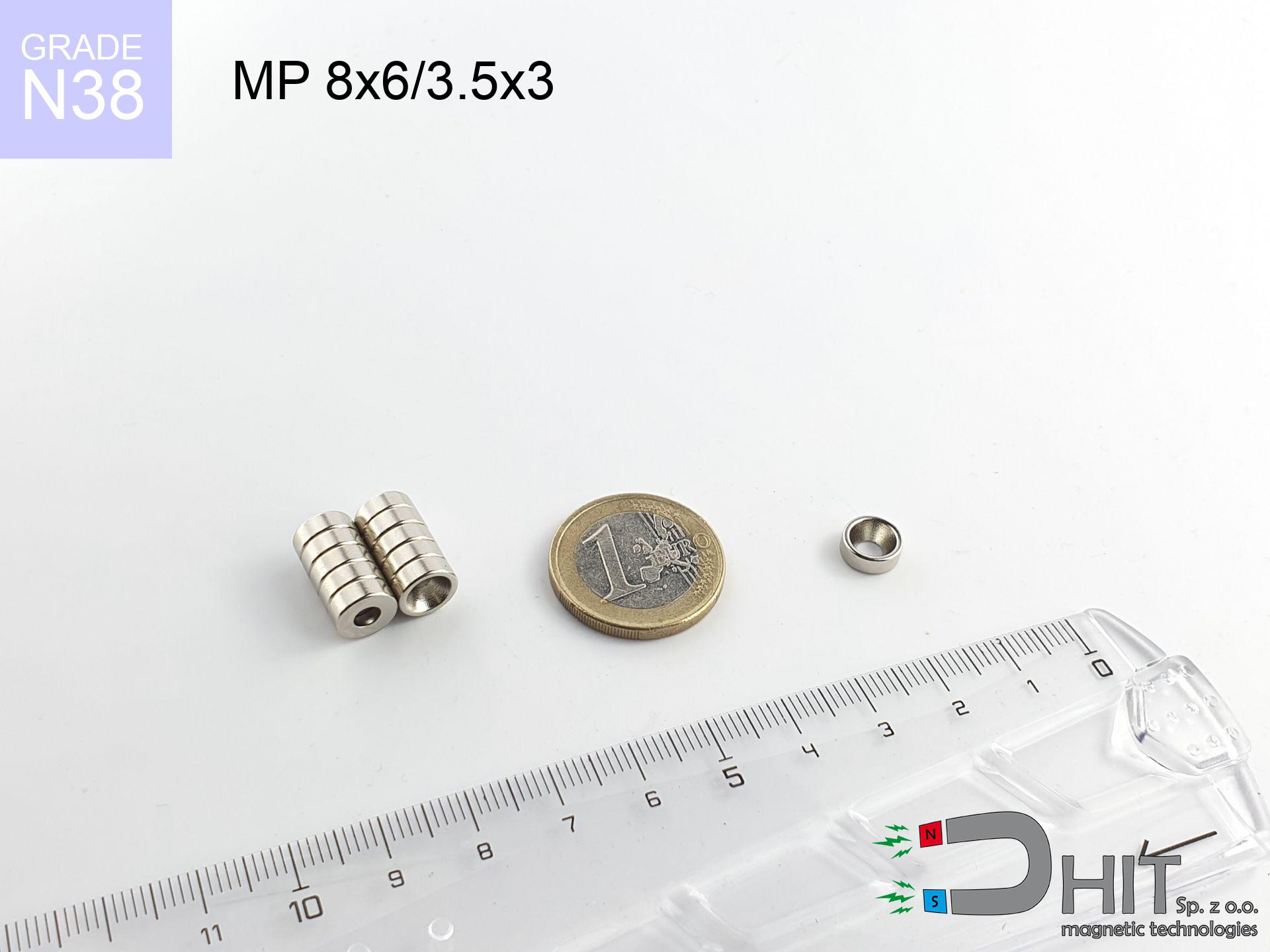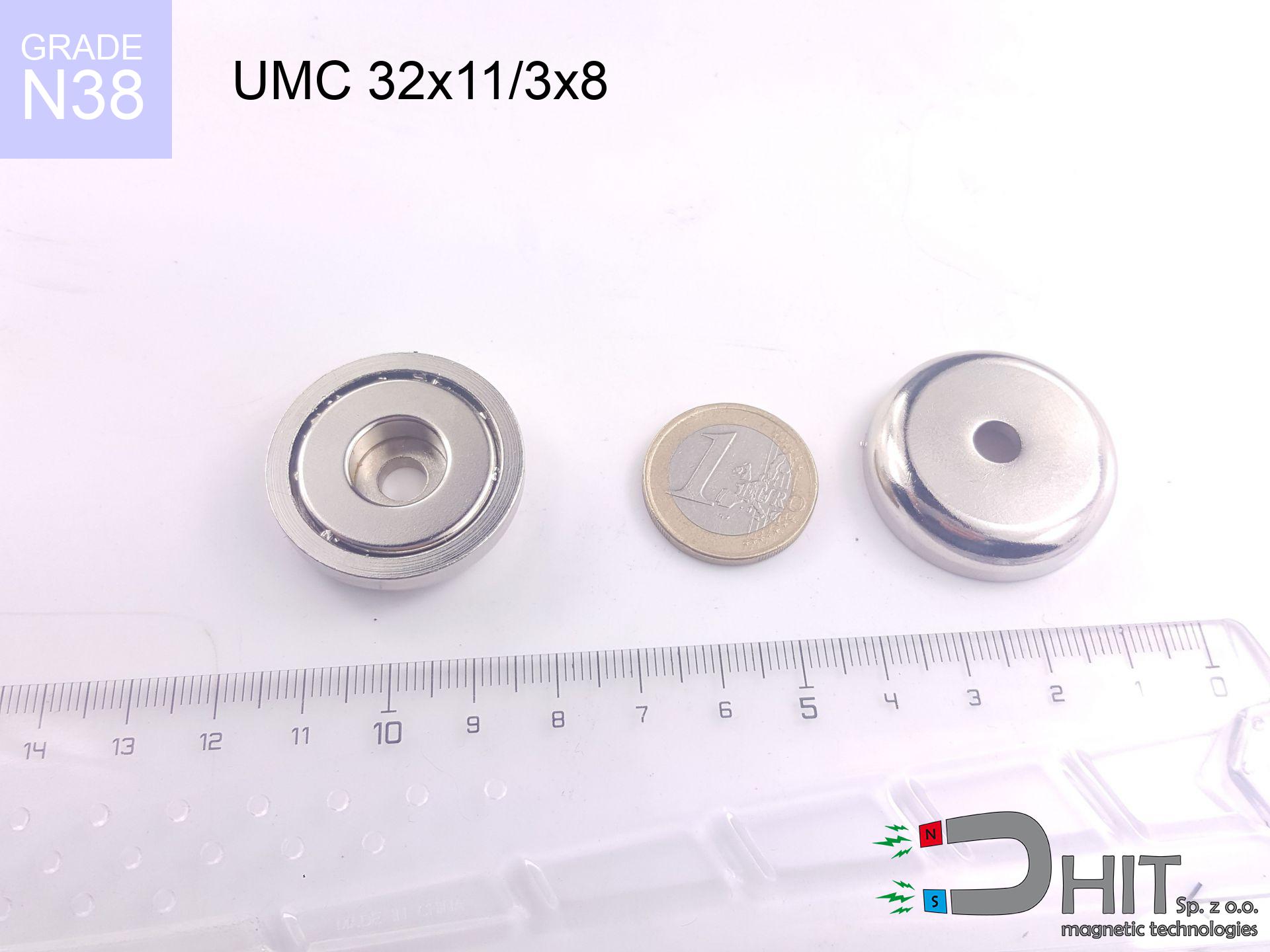UMGW 48x24x11.5 [M8] GW / N38
magnetic holder internal thread
catalog number 180418
GTIN: 5906301813774
diameter Ø
48
mm [±0,1 mm]
height with thread
24
mm [±0,1 mm]
height
11.5
mm [±0,1 mm]
capacity ~
80.00 kg / 784.53 N
max. temperature
≤ 80
°C
catalog number 180418
GTIN: 5906301813774
diameter Ø
48 mm [±0,1 mm]
height with thread
24 mm [±0,1 mm]
height
11.5 mm [±0,1 mm]
capacity ~
80.00 kg / 784.53 N
max. temperature
≤ 80 °C
59.96 ZŁ gross price (including VAT) / pcs +
48.75 ZŁ net price + 23% VAT / pcs
bulk discounts:
need more quantity?Don't know what to choose?
Give us a call tel: +48 22 499 98 98 or write through contact form on the contact page. You can check the power as well as the shape of neodymium magnets in our magnetic mass calculator magnetic calculator
Orders placed by 2:00 PM will be shipped on the same business day.
Specification: magnetic holder internal thread 48x24x11.5 [M8] GW / N38
Magnetic properties of the material N38
Physical properties of sintered neodymium magnets Nd2Fe14B
List recommended items
Advantages and disadvantages of neodymium magnets NdFeB.
Apart from immense strength, neodymium magnets have the following advantages:
- They do not lose strength over time - after 10 years, their power decreases by only ~1% (theoretically),
- They protect against demagnetization caused by external magnetic field very well,
- In other words, thanks to the glossy nickel, gold, or silver finish, the element gains an visually attractive appearance,
- They have exceptionally high magnetic induction on the surface of the magnet,
- By using an appropriate combination of materials, they can achieve high thermal resistance, allowing them to operate at temperatures up to 230°C and above...
- The ability for precise shaping and customization to specific needs – neodymium magnets can be produced in many variants of shapes or sizes, which amplifies their universality in usage.
- Key role in modern technologies – find application in hard drives, electric motors, medical devices and very highly developed apparatuses.
Disadvantages of neodymium magnets:
- They are prone to breaking as they are extremely fragile when subjected to a strong impact. If the magnets are exposed to impacts, it is suggested using magnets in a steel housing. The steel housing in the form of a holder protects the magnet from impacts and also increases its overall strength,
- High temperatures can reduce the power of neodymium magnets. Typically, after heating above 80°C, most of them experience a permanent loss in strength (although it is dependent on the shape and size). To prevent this, we offer special magnets marked with the symbol [AH], which are highly resistant to high temperatures. They can operate even at temperatures up to 230°C, making them an ideal solution for applications requiring high-temperature operation,
- Magnets exposed to a humid environment can corrode. Therefore, when using them outdoors, we recommend using waterproof magnets made of rubber, plastic, or other moisture-resistant materials,
- Limited ability to create threads or complex shapes in the magnet - the use of a housing is recommended - magnetic holder
- Potential hazard arising from small pieces of magnets pose a threat, when accidentally ingested, which is crucial in the context of child safety. Furthermore, tiny parts of these magnets have the potential to be problematic in medical diagnosis when they are in the body.
Handle Neodymium Magnets with Caution
Neodymium magnets are the most powerful magnets ever created, and their strength can shock you.
Make sure to review all the information we have provided. This will help you avoid harm to your body and damage to the magnets.
Keep neodymium magnets away from people with pacemakers.
Neodymium magnets generate very strong magnetic fields that can interfere with the operation of a pacemaker. This is because many of these devices are equipped with a function that deactivates the device in a magnetic field.
Dust and powder from neodymium magnets are highly flammable.
Do not attempt to drill into neodymium magnets. Mechanical processing is also not recommended. If the magnet is crushed into fine powder or dust, it becomes highly flammable.
Neodymium magnets can demagnetize at high temperatures.
In certain circumstances, Neodymium magnets can lose their magnetism when subjected to high temperatures.
It is crucial not to allow the magnets to pinch together uncontrollably or place your fingers in their path as they attract to each other.
Magnets attract each other within a distance of several to about 10 cm from each other. Remember not to insert fingers between magnets or alternatively in their path when attract. Depending on how large the neodymium magnets are, they can lead to a cut or alternatively a fracture.
Under no circumstances should neodymium magnets be placed near a computer HDD, TV, and wallet.
Strong fields generated by neodymium magnets can damage magnetic storage media such as floppy disks, credit cards, magnetic ID cards, cassette tapes, video tapes, or other similar devices. In addition, they can damage televisions, VCRs, computer monitors, and CRT displays. Avoid placing neodymium magnets in close proximity to electronic devices.
The magnet is coated with nickel. Therefore, exercise caution if you have an allergy.
Studies show a small percentage of people have allergies to certain metals, including nickel. An allergic reaction often manifests as skin redness and rash. If you have a nickel allergy, you can try wearing gloves or simply avoid direct contact with nickel-plated neodymium magnets.
Magnets made of neodymium are highly susceptible to damage, resulting in their cracking.
Neodymium magnets are characterized by considerable fragility. Neodymium magnetic are made of metal and coated with a shiny nickel, but they are not as durable as steel. In the event of a collision between two magnets, there may be a scattering of fragments in different directions. Protecting your eyes is crucial in such a situation.
Do not give neodymium magnets to youngest children.
Neodymium magnets are not toys. Do not allow children to play with them. In the case of swallowing multiple magnets simultaneously, they can attract to each other through the intestinal walls. In the worst case scenario, this can lead to death.
Keep neodymium magnets as far away as possible from GPS and smartphones.
Magnetic fields can interfere with compasses and magnetometers used in aviation and maritime navigation, as well as internal compasses of smartphones and GPS devices. There are neodymium magnets in every smartphone, for example, in the microphone and speakers.
In order to show why neodymium magnets are so dangerous, see the article - How very dangerous are powerful neodymium magnets?.

![UMGW 48x24x11.5 [M8] GW / N38 UMGW 48x24x11.5 [M8] GW / N38](https://cdn3.dhit.pl/graphics/products/umgw-48x24x11.5-m8-gw-val.jpg)





